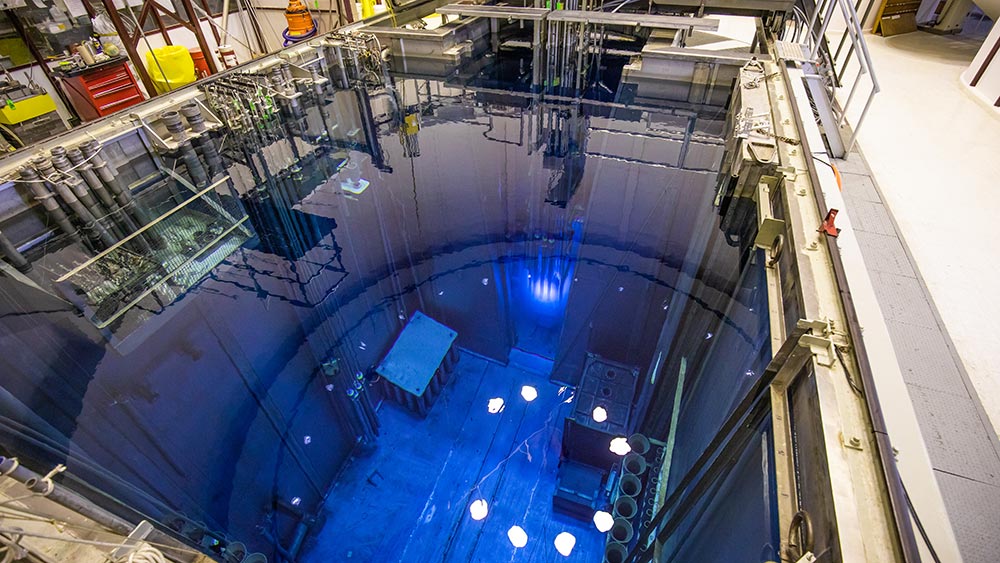
If you’re familiar with Iron Man’s arc reactor or the Tesseract in Marvel movies, you may recognize the eerie blue light emitted by these fictional energy sources. Popular culture and science fiction have taught us that advanced nuclear gadgets tend to release an intense blue or green light. While this certainly helps establish the other-worldly aesthetic that pervades science fiction, you may be surprised to learn that some reactors actually do radiate a unique light blue color.
Water-cooled power reactors are contained in a pressure vessel and are one of the most common types of reactors found around the world. Some water-cooled research reactors, such as the TRIGA (training, research, isotopes, general atomics) reactor at the Nuclear Engineering and Science Center (NESC), are operated at atmospheric pressure and look like a big swimming pool bathed in blue light. This glow is the result of Cherenkov radiation, which occurs when free electrons travel faster than the phase velocity of light in a medium, such as water. It’s the equivalent of a sonic boom, except with light and not sound. It’s also the focus of Texas A&M University postdoctoral researcher Jason Hearne’s work.
“The blue light that you see is proportional to the radiation density,” Hearne said. “By positioning a camera toward the core to examine how much blue light is present, I can discover the power density in different parts of the reactor as well as the total power of the reactor.

Because the amount of visible blue light in a given area corresponds with the amount of power, scientists can measure not only the total power of a reactor, but the power in various parts of the reactor as well. This power profile determination can help quickly detect anomalies in a reactor such as flux tilts or the approximate size and location of a blockage in a coolant channel. As an additional instrumentation system for a reactor, this method of data analysis allows scientists to better increase optimization efforts and reduce the likelihood of reactor failure.
So far, Hearne’s work has been computer-model based using what’s known as the Monte Carlo N-Particle (MCNP) transport code. Monte Carlo simulations are used across a variety of fields to predict the multiple outcomes of a process when there are many unknown variables.
“Statistically, we know how a particle will behave at any point in time,” Hearne explained. “MCNP uses random numbers to simulate what one particle does, and then another and then another. Then we have millions of particles and we can find an average, and that helps us understand how the TRIGA reactor would behave under certain circumstances.”
Hearne soon hopes to begin experimental implementation of his Cherenkov project using the TRIGA reactor at the NESC. His research proves that reactor safety does not have to be compromised for power and that despite the stigma, reactors are becoming more efficient, effective and secure by the day.